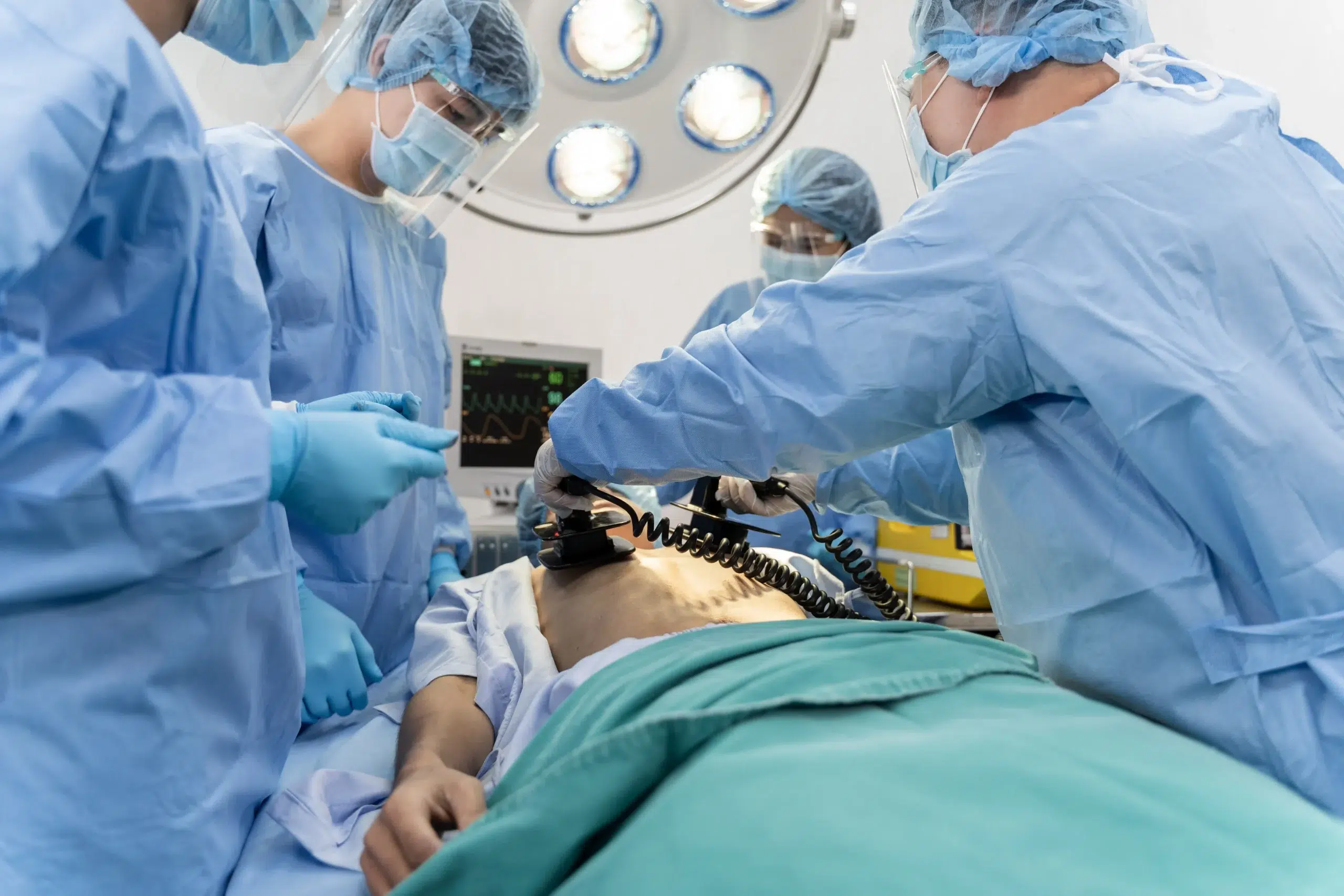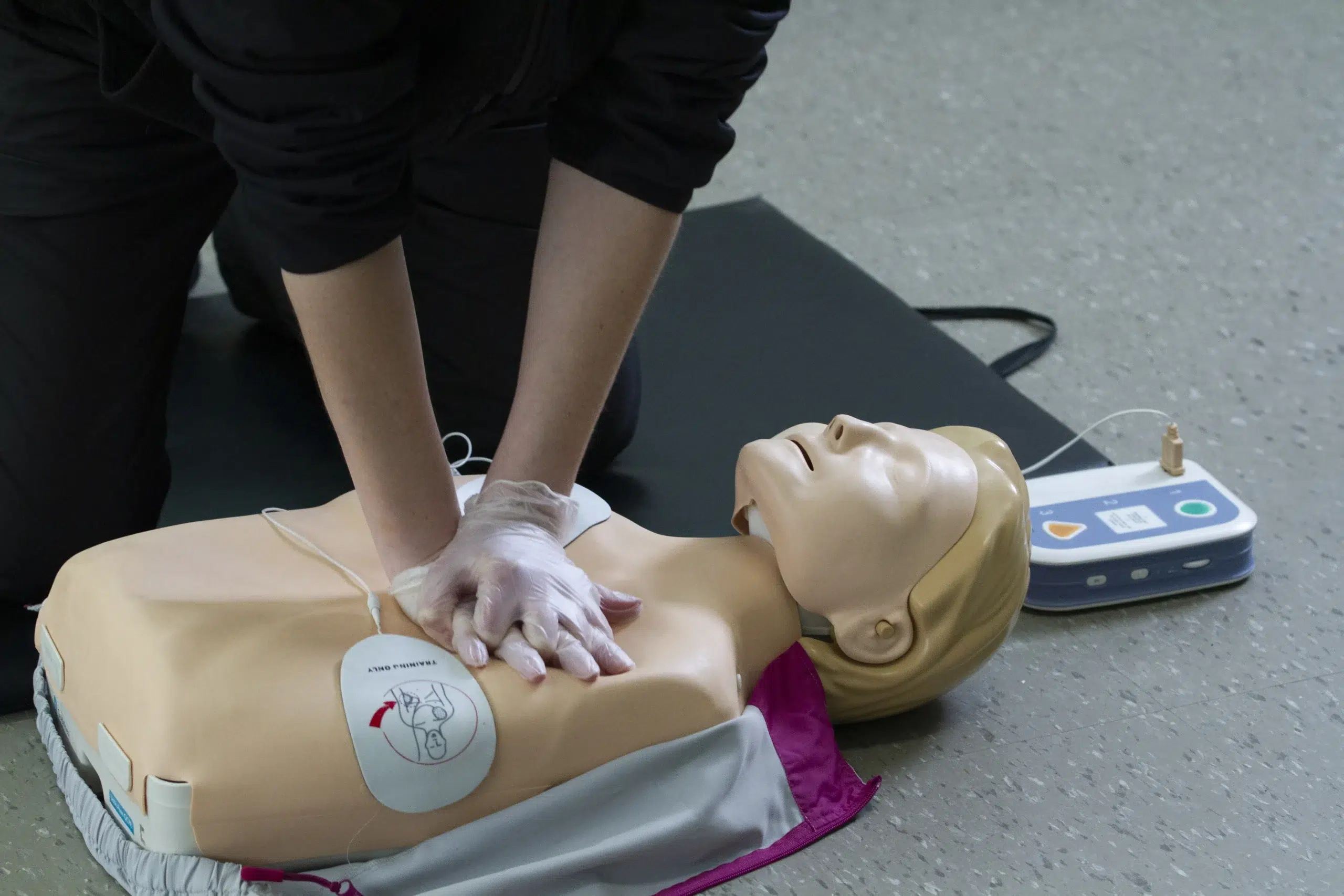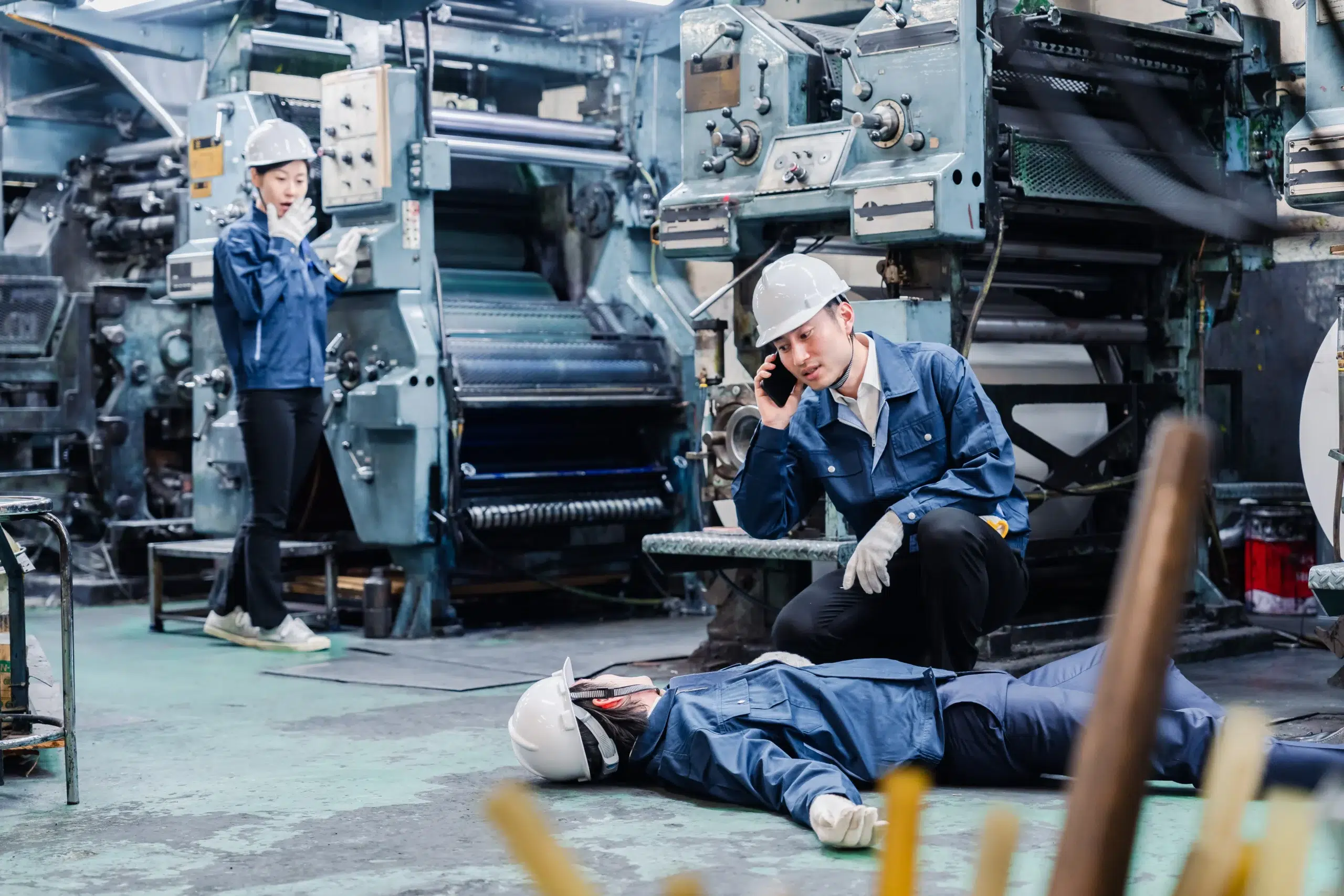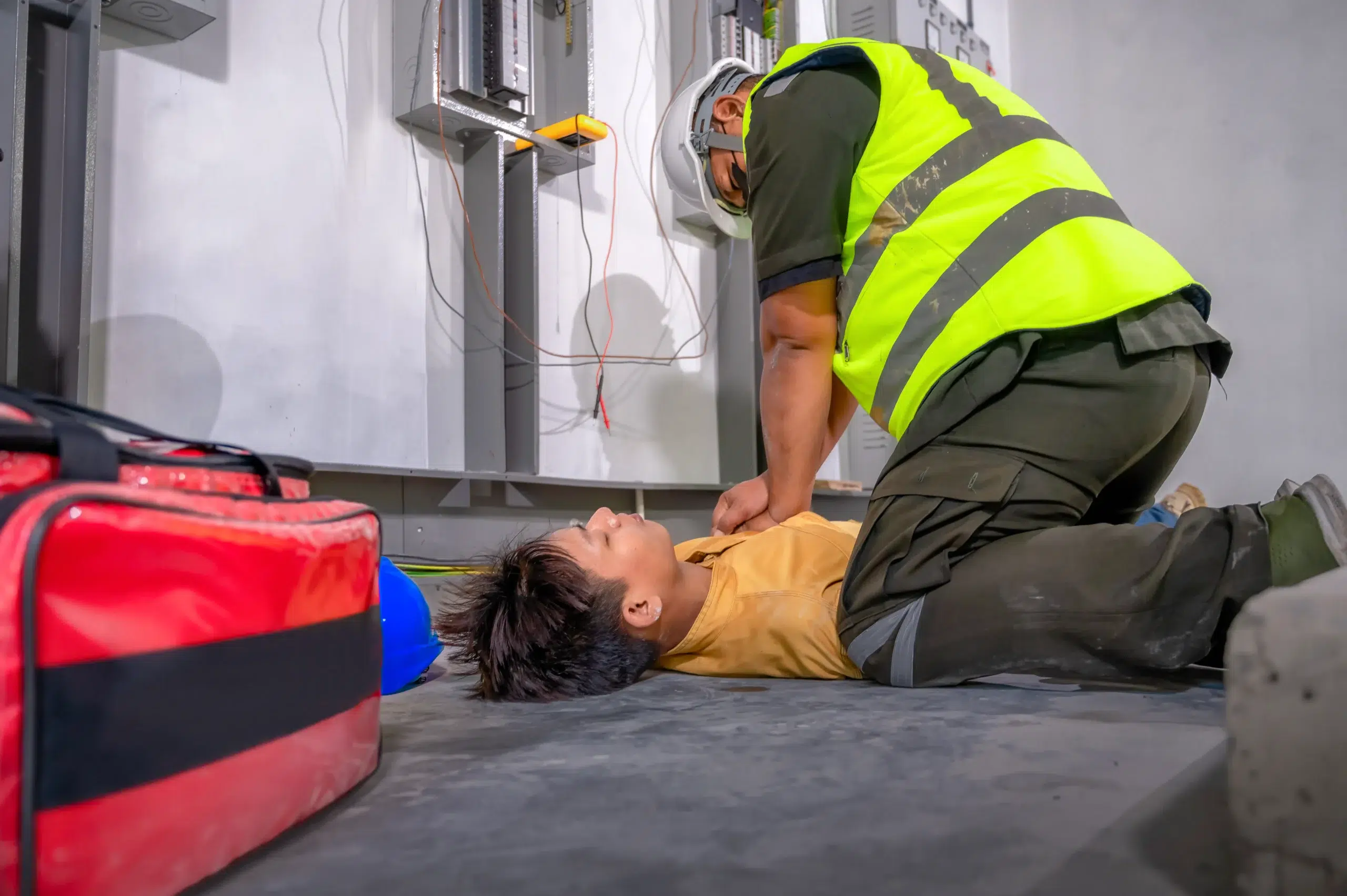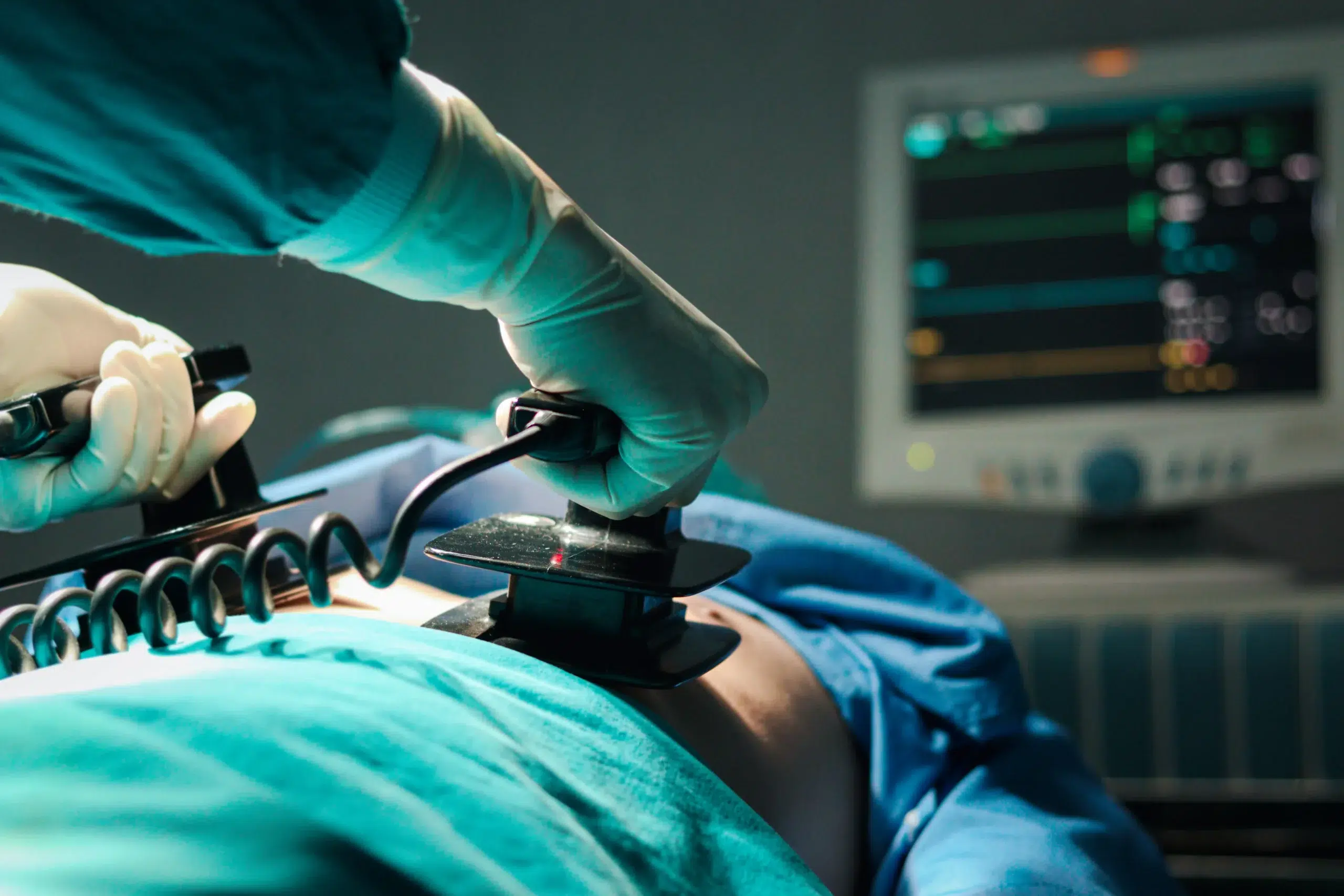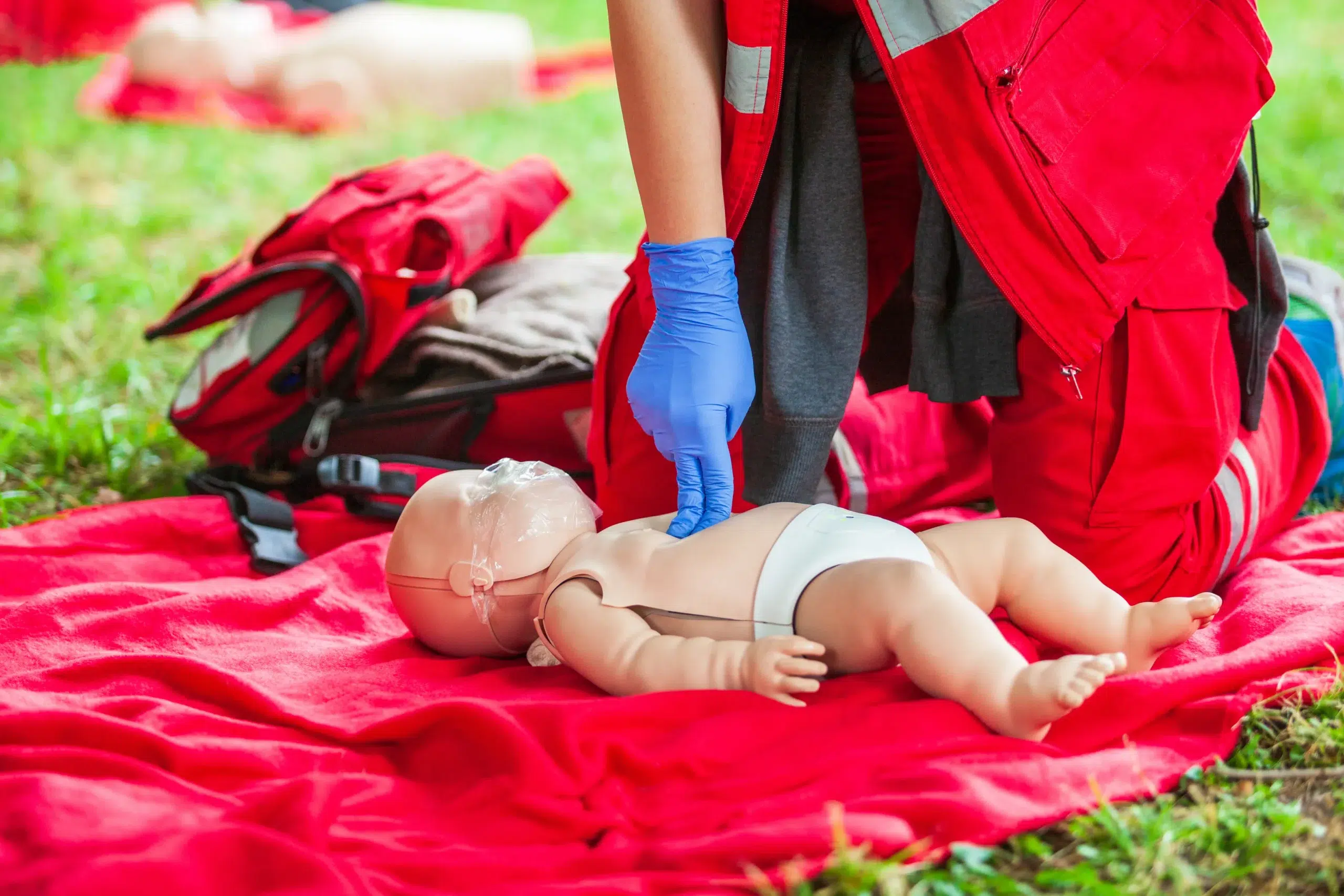Learning CPR can feel like acquiring a superpower—the power to save a life. But knowing where to find the right training can be tricky. This guide breaks down everything you need to know about CPR certification, from understanding different course types to finding “CPR certification near me” and debunking common CPR myths. Whether you’re a healthcare professional, a childcare provider, or just someone who wants to be prepared, this guide will help you find the perfect CPR course and gain the confidence to make a difference. We’ll cover the benefits of CPR certification, what to expect during training, how to maintain your skills, and even address common misconceptions about CPR. Let’s get started!
Key Takeaways
- CPR certification builds confidence and skills: It empowers you to respond effectively in emergencies, giving you the knowledge and practical training to make a real difference.
- Find the right CPR course for your needs: Consider factors like course format (online, in-person, or blended), instructor qualifications, and certification requirements for your job or career goals.
- Stay current with your CPR training: Maintain your certification and refresh your skills regularly to ensure you’re always prepared to provide assistance when it matters most.
What is CPR Certification & Why Does it Matter?
CPR certification formally recognizes that you’ve completed training in cardiopulmonary resuscitation (CPR) techniques. This training gives you the skills to respond effectively in emergencies where someone’s life is at risk due to cardiac arrest or respiratory failure. CPR and First Aid certification often go hand-in-hand, as both are crucial life-saving skills. Learn more about CPR and First Aid certification courses.
Getting CPR certified is crucial. While anyone can attempt CPR, proper training ensures you know the correct techniques and procedures, significantly increasing a victim’s chance of survival. As a resource from CPR Classes notes, training helps ensure you can use this technique effectively.
CPR certification also prepares you to act confidently in emergencies. Many hesitate to help because they’re unsure what to do. Juniper Safety points out that CPR certification changes that by giving you the knowledge and skills to respond appropriately.
Finally, CPR training fosters a sense of community responsibility. CPR Certification Now emphasizes that trained individuals become a vital part of the community’s emergency response system. CPR certification matters: it empowers you to save lives and make your community safer.
CPR Certification Courses
Danville CPR Classes offers a variety of CPR and first-aid courses to meet different needs. Whether you’re a healthcare professional, childcare provider, or simply want to be prepared for emergencies, there’s a course for you. Here’s a rundown of the key certifications we offer:
Basic Life Support (BLS)
Basic Life Support (BLS) provides the foundational knowledge and skills to respond to life-threatening emergencies. The course covers core techniques like CPR, recognizing the signs of a heart attack, using an AED, and relieving choking. BLS certification is crucial for healthcare providers, first responders, and anyone in a position to provide immediate care.
Advanced Cardiac Life Support (ACLS)
Advanced Cardiac Life Support (ACLS) is designed for healthcare professionals who manage cardiac arrest and other cardiovascular emergencies. Building upon the fundamentals of BLS, ACLS training delves into advanced airway management, pharmacology, and team dynamics during resuscitation scenarios.
Pediatric Advanced Life Support (PALS)
Pediatric Advanced Life Support (PALS) focuses on the specific needs of infants and children in medical crises. Healthcare providers learn to assess and treat pediatric respiratory emergencies, cardiac arrest, and other critical conditions. PALS certification is essential for those working in pediatrics, emergency medicine, and intensive care.
Neonatal Resuscitation Program (NRP)
The Neonatal Resuscitation Program (NRP) equips healthcare professionals with the skills to resuscitate and stabilize newborns in the delivery room. This specialized training covers the immediate care of newborns experiencing respiratory distress or other complications at birth.
First Aid & CPR
Combining essential first aid and CPR skills, this comprehensive course prepares you to handle a wide range of emergencies. You’ll learn how to manage injuries, illnesses, and environmental emergencies, in addition to mastering CPR and AED use. First Aid & CPR training is valuable for anyone who wants to be prepared to help in a crisis.
Find CPR Certification Providers
Finding the right CPR certification course starts with finding a reputable provider. Here’s a rundown of common places to find CPR training:
AHA Training Centers
Organizations like the American Heart Association (AHA) are known for their comprehensive and standardized training. AHA Training Centers offer a range of courses, from basic CPR to advanced certifications like ACLS and PALS. They adhere to strict guidelines, ensuring high-quality instruction and widely recognized credentials.
Local Colleges & Universities
Many colleges and universities offer CPR certification courses through their health and safety programs or continuing education departments. These courses often cater to both students and the wider community.
Hospitals & Medical Centers
Hospitals and medical centers frequently provide CPR training, especially for their staff. Some also extend these courses to the public. These settings offer a practical learning environment, often with access to advanced medical equipment and experienced instructors. For healthcare professionals, BLS/CPR certification is often a job requirement.
Fire Departments & EMS Agencies
Local fire departments and EMS agencies are key providers of CPR training within their communities. They frequently offer courses tailored to specific community needs, including specialized training for first responders.
Online Certification
Online CPR certification courses offer flexibility and convenience. These courses typically cover the same core material as in-person classes, including CPR techniques and how to respond to emergencies. However, it’s essential to choose a program that includes a hands-on skills assessment component to meet standard certification requirements.
Danville CPR Classes
Danville CPR Classes offers a wide variety of American Heart Association (AHA) courses, including BLS, ACLS, PALS, NRP, and CPR/First Aid. We also offer specialized training like EMSA Child Care Health & Safety and RQI classes for healthcare professionals. We’re a woman-owned AHA Training Center committed to providing high-quality courses with a low price guarantee. Contact us today to learn more.
Choose the Right CPR Course
Finding the right CPR course means considering a few things, like your learning style and career goals. Let’s break down the key elements to help you make a smart choice.
Online, In-Person, or Blended Learning?
CPR courses come in different formats. Online CPR training offers flexibility, letting you learn at your own pace and on your own schedule. In-person classes give you hands-on practice and direct interaction with an instructor. Blended learning combines online coursework with an in-person skills assessment. Some programs are evenly balanced between online and in-person training. Even an in-person class might include an online training module to practice what you learned in class, or an online CPR training program may require an in-person practical test for certification. Think about how you learn best and what fits your schedule.
Certification Requirements for Your Job
Before signing up for a CPR course, check the specific certification requirements for your job. Some employers require certification from a specific organization, like the American Heart Association (AHA) or the American Red Cross. Always check with your employer or school to determine which certification they accept or prefer, since this can vary. Knowing these requirements ahead of time will ensure your certification is valid.
Instructor Qualifications & Experience
Your instructor’s expertise matters. Look for certified CPR instructors with lots of experience and a passion for teaching. Experienced instructors offer real-world insights, answer your questions clearly, and create a comfortable learning environment. One of the most essential elements that significantly impacts the quality of a CPR and First Aid Training course is the role of experienced instructors. These certified CPR instructors bring a wealth of knowledge and hands-on experience to the training environment. Check instructor bios and reviews to get a sense of their qualifications and teaching style. Our instructors at Danville CPR Classes are highly qualified and dedicated to providing top-notch instruction.
Class Size & Hands-On Practice
Class size can affect how well you learn. Smaller classes usually mean more individual attention from the instructor and more chances for hands-on practice. Enough practice time on CPR training mannequins is key for developing muscle memory and really mastering the techniques. In a hands-on class, you’ll use a CPR training mannequin to learn exactly where and how hard you need to press to provide effective chest compressions. When choosing a course, ask about the class size and how much hands-on training is included.
Accreditation & Recognition
Make sure your chosen CPR training provider is accredited by a recognized organization, such as the American Heart Association (AHA). Accreditation means the course meets established standards, and your certification will be widely accepted. It is crucial to choose a CPR training provider that is accredited by recognized organizations such as the American Heart Association (AHA), American Red Cross, National Safety Council (NSC), or other reputable certifying bodies. Check the provider’s credentials before you register. Danville CPR Classes is a woman-owned AHA Training Center, so you can be confident you’re getting high-quality, accredited training. Contact us to find out more about our courses and how we can help you get certified.
CPR Certification Costs
CPR certification is an investment in your skills and ability to potentially save a life. Understanding the costs involved can help you budget accordingly and find the best value for your training. Let’s break down the factors that influence CPR class costs.
Average Course Prices
CPR class costs vary depending on the type of certification, the training provider, and what’s included in the course. Basic CPR and First Aid certification typically starts around $70 to $90, while more advanced courses like ACLS or PALS can range from $150 to $250. It’s always a good idea to check with various providers like Danville CPR Classes for their specific pricing. For example, see Danville CPR Classes’ CPR and First Aid certification page for their course options and prices.
Group Discounts & Promotions
Many CPR training providers offer reduced rates for group bookings. This can be a great option for workplaces, community groups, or families looking to get certified together. Some providers also run periodic promotions or offer discounts for certain groups, so it’s worth inquiring about any current deals. Reach out to providers like Danville CPR Classes to ask about group discounts and their low price guarantee. You might also find occasional promotional codes for discounts on sites like iMaster CPR Classes.
Hidden Costs
Be sure to clarify exactly what’s included in the course fee. Some providers might charge extra for things like certification cards, course materials, or recertification fees. While specialized equipment like a defibrillator can be helpful in a medical emergency, it isn’t required for standard CPR training. Understanding what you’re paying for upfront helps avoid unexpected expenses.
Low Price Guarantees
Some training centers, like Danville CPR Classes, offer a low price guarantee, ensuring you’re getting the most affordable training in your area. This can give you peace of mind knowing you’re not overpaying for your certification. If you’re price-sensitive, definitely look for providers who offer this guarantee.
What Happens During CPR Training?
CPR training blends theory and practical skills to prepare you for real-life emergencies. While specifics vary based on the course (BLS, ACLS, PALS, etc.), the overall structure is similar. Let’s break down what you can expect.
Curriculum & Learning Objectives
CPR classes cover essential life-saving techniques, starting with recognizing the signs of a cardiac arrest. You’ll learn how to assess the scene, check for responsiveness, and activate the emergency response system. The curriculum also includes instruction on performing chest compressions, delivering rescue breaths, and using an AED. Courses like EMSA Child Care Health & Safety offer specific protocols for infants, children, and other specialized situations. Depending on the format, you might complete the theoretical portion through online modules, in-person lectures, or a combination of both.
Skills Practice & Assessment
Hands-on practice is the cornerstone of effective CPR training. You’ll work with a CPR training mannequin to practice chest compressions, ensuring proper depth and rate. Instructors provide real-time feedback and guidance. You’ll also practice delivering rescue breaths and learn how to use an AED. This practical training builds muscle memory and confidence, preparing you to respond effectively under pressure. In-person classes offer immediate feedback and personalized instruction.
Written Exams
Most CPR courses include a written exam to assess your understanding. The passing score varies depending on the certifying organization. For example, the AHA typically requires a higher passing score than the Red Cross. These exams cover topics like recognizing cardiac arrest, performing CPR, and using an AED. The questions focus on practical application. If you actively participate and review the materials, you’ll be well-prepared. For healthcare professionals renewing certifications, consider our streamlined RQI classes.
Course Length & Time Commitment
The time commitment for CPR training varies depending on the course type and format. Online courses offer flexibility, allowing you to complete the theoretical portion at your own pace. In-person classes usually range from a half-day to a full day. Blended learning formats combine online learning with a shorter in-person skills session. For example, our BLS CPR Provider Heartcode course lets you complete the coursework online in 1–2 hours before a 40–60 minute skills session. Check out our low price guarantee and contact us with any questions.
Maintain Your CPR Certification
CPR certification isn’t a one-and-done deal. Staying current with your training is essential for providing effective care in emergencies. This section covers everything you need to know about maintaining your CPR skills and certification.
How Long is Certification Valid?
CPR certifications, like those from the American Heart Association, are typically valid for two years. This timeframe ensures that rescuers maintain a fresh understanding of the latest guidelines and techniques. Knowing the expiration date of your certification is crucial, so keep track of it and mark your calendar for renewal. Check out our CPR and First Aid certification courses to learn more.
Renewal Process
Renewing your CPR certification is straightforward. Look for “renewal” courses offered by certified training centers like Danville CPR Classes. These streamlined courses cover essential updates and refresh your practical skills. You can often find options for in-person or blended learning formats, allowing you to choose the best fit for your schedule. Contact us to find a renewal course near you.
Keep Your Skills Current
Even if your certification is still valid, regularly practicing your CPR skills is invaluable. Consider refresher sessions or practice scenarios to keep your knowledge and muscle memory sharp. CPR training provides not only practical skills but also the mental preparation to handle emergencies effectively. By staying up-to-date, you’ll be better equipped to respond confidently and potentially save a life. Explore our RQI classes for healthcare professionals to maintain essential life-saving skills.
Benefits of CPR Certification
Getting CPR certified isn’t just about learning a skill; it’s about gaining confidence, opening career doors, and ultimately, having the power to save a life. Let’s explore some key benefits:
Confidence & Empowerment
CPR certification equips you with the knowledge and skills to respond effectively in medical emergencies. This training instills confidence, empowering you to take action when every second counts. Instead of feeling helpless, you’ll be prepared to provide immediate assistance, potentially bridging the gap until professional help arrives. Knowing you can make a difference can bring a sense of empowerment to your daily life, extending beyond emergency situations. This newfound confidence can positively impact other areas of your life, from your professional endeavors to your personal relationships. CPR training helps dispel common misconceptions about CPR, allowing individuals to feel more prepared and capable of handling emergencies.
Career Advancement
In many industries, CPR certification is a sought-after qualification. It demonstrates your commitment to safety and preparedness, making you a valuable asset to any team. For those pursuing careers in healthcare, education, childcare, or fitness, CPR certification is often a prerequisite. Even in fields where it’s not mandatory, having this certification can give you a competitive edge, showcasing your willingness to go the extra mile. CPR certification can significantly enhance your resume and open doors to new opportunities. It’s a worthwhile investment in your professional development, potentially leading to promotions, higher salaries, and greater job satisfaction. For healthcare professionals, maintaining your BLS/CPR certification is often essential for career progression.
Save Lives
The most profound benefit of CPR certification is the potential to save lives. CPR can double or triple the chances of survival for someone experiencing cardiac arrest. By learning how to perform chest compressions and rescue breaths, you become a vital link in the chain of survival. CPR training equips you to respond effectively in various medical emergencies, not just cardiac arrest. You’ll learn how to recognize the signs of a heart attack, stroke, choking, and other life-threatening conditions. This knowledge can help you provide crucial assistance in those critical moments before professional medical help arrives. Knowing you possess these life-saving skills can bring a sense of purpose and fulfillment, knowing you have the potential to make a real difference. For more information about debunking common CPR myths, take a look at this resource from the Australian Training Institute.
CPR Certification Misconceptions
It’s easy to put off learning CPR. Maybe you’re busy, or maybe you’re unsure if you’re up to the task. Let’s clear up some common misconceptions about CPR training and certification.
Debunking CPR Myths
One of the biggest myths is that you need extensive medical training to perform CPR effectively. This simply isn’t true. CPR courses teach you the essential skills, and with practice, you can learn how to perform it on an unconscious person. You don’t even need special equipment like a defibrillator to perform CPR, although having one nearby can certainly increase the chances of survival. Another misconception is that everyone needs formal certification. While CPR certification validates your skills and may be required for certain jobs, you don’t technically need one to perform CPR in an emergency.
Some people worry about performing CPR incorrectly or causing further injury. These concerns, while understandable, often stem from outdated information. The latest guidelines from the American Heart Association (AHA) emphasize compression-only CPR as the preferred method for most situations. This simplifies the process and reduces hesitation. Mouth-to-mouth resuscitation is only necessary in specific cases. If you’re concerned about proper technique, a CPR class will give you the confidence and skills to act quickly and correctly.
CPR in Real-Life Emergencies
Understanding CPR and having the confidence to perform it can make a real difference in a life-or-death situation. Misconceptions about CPR training and certification can lead to hesitation in emergencies, which can have devastating consequences. Learning CPR empowers you to act quickly and potentially save a life. Danville CPR Classes offers a variety of courses to fit your needs and help you gain the skills and confidence to respond effectively in an emergency. Contact us today to learn more.
Prepare for Your CPR Course
Getting ready for your CPR class involves more than just signing up. A little preparation beforehand can make a big difference in how much you get out of the experience. Here’s how to get ready for your upcoming CPR course:
Required Materials & Equipment
Most CPR courses provide the necessary training materials. These are often developed by experts and updated regularly, like the materials from the American Red Cross, to reflect the latest emergency science. This can include manuals, videos, and access to online resources. For in-person training, the course provider will supply the mannequins and other equipment. Double-check with Danville CPR Classes about any specific items you might need.
Pre-Course Study
While not always mandatory, reviewing some basic CPR information before class can be incredibly helpful. Think of it as a warm-up for your brain! Online resources and pre-course materials (if provided) offer a preview of key concepts and techniques. Online CPR certification offers a flexible way to familiarize yourself with the material at your own pace. This can make it easier to absorb the information presented during the actual course. Online courses can also equip you with foundational knowledge and skills beforehand.
Physical & Mental Prep
CPR training involves both physical and mental preparation. Be prepared for some physical activity, as you’ll be practicing chest compressions and rescue breaths on training mannequins. Hands-on classes let you learn the correct placement and depth of compressions for effective CPR. Mentally, it’s helpful to understand that CPR can be a stressful situation. Your training will help you develop the confidence and focus needed to respond effectively in an emergency. A good night’s sleep and a healthy meal or snack beforehand can also help you stay alert and focused.
Related Articles
- Why CPR is Vital in Healthcare and Public Safety
- The Importance of CPR in Saving Lives – Danville CPR Classes
- CPR Certification in Danville: Your Complete Guide – Danville CPR Classes
- CPR Training in Dublin: A Complete Guide – Danville CPR Classes
- Debunking Common CPR Myths for Better Preparedness
Frequently Asked Questions
What if I’m nervous about performing CPR in a real emergency? It’s completely normal to feel nervous about performing CPR. That’s why training is so important. High-quality CPR courses give you the skills and confidence to respond effectively under pressure. Hands-on practice with training mannequins helps build muscle memory, so you’ll know what to do even if you’re feeling stressed. Plus, instructors often discuss how to manage the emotional aspects of emergency situations, which can further ease your concerns.
How do I choose the right CPR class for me? Consider your learning style and schedule. Do you prefer online learning, in-person instruction, or a blend of both? Also, think about your career goals. Some professions require certification from specific organizations like the AHA. Check with your employer or licensing board to confirm any requirements. Finally, compare course content, instructor experience, and class size to find the best fit. Smaller classes often provide more personalized attention and opportunities for hands-on practice.
What’s the difference between CPR and First Aid certification? CPR focuses specifically on life-saving techniques for cardiac arrest and respiratory emergencies. First Aid covers a broader range of injuries and illnesses, such as cuts, burns, fractures, and allergic reactions. Many courses combine CPR and First Aid training, giving you a well-rounded skillset to handle various emergencies.
How often do I need to renew my CPR certification? Most CPR certifications are valid for two years. Renewing your certification ensures you stay up-to-date with the latest guidelines and best practices. Renewal courses are typically shorter than initial certification courses and focus on refreshing your knowledge and skills.
Why should I get CPR certified if I’m not a healthcare professional? CPR is a life skill that anyone can benefit from. Emergencies can happen anytime, anywhere, and knowing CPR can empower you to save a life. Whether it’s a family member, a friend, a coworker, or even a stranger, your CPR skills can make a critical difference in a life-or-death situation. It’s about being prepared and having the confidence to act when it matters most.


